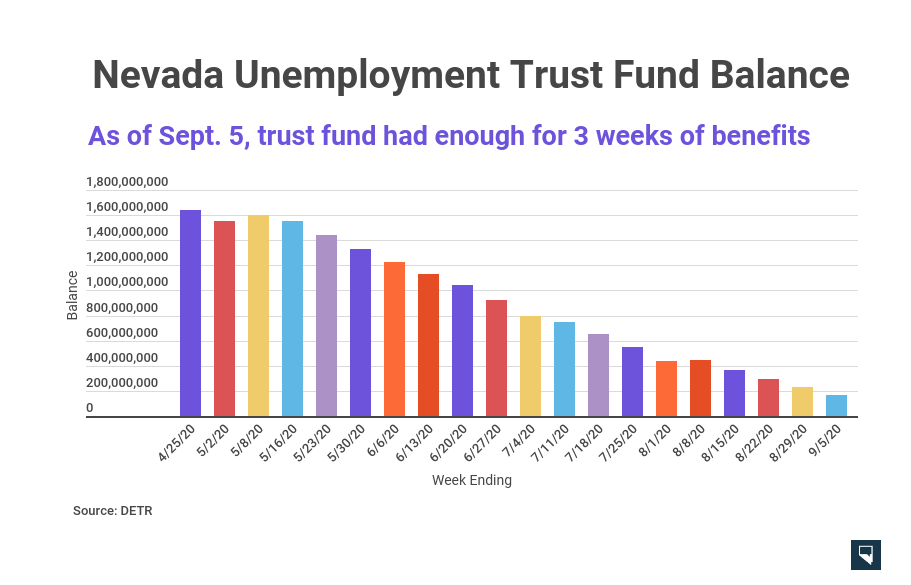FEMA approves Nevada for Lost Wages Assistance unemployment; state taking over call center duties from Alorica
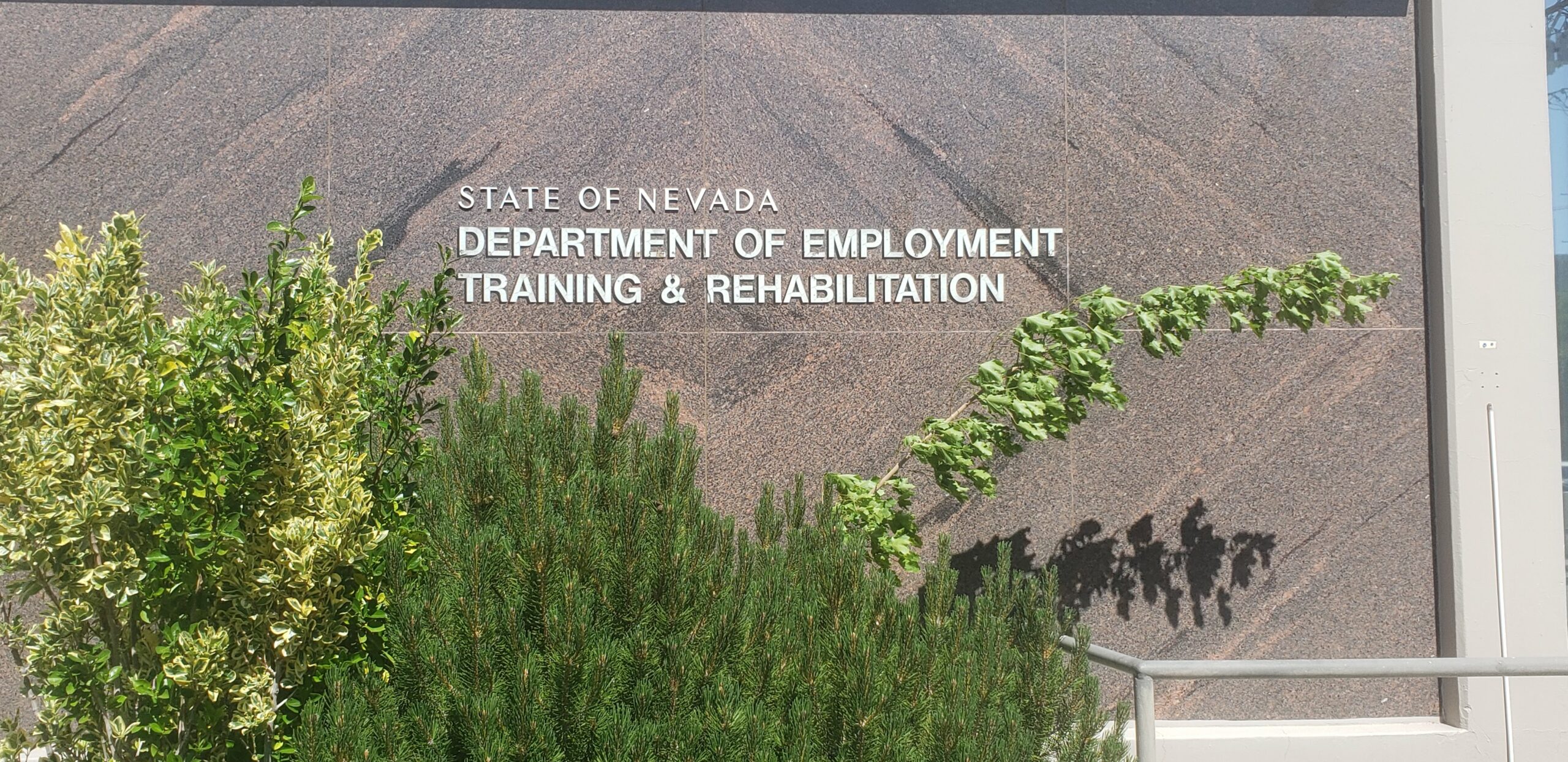
Nevada has been approved for the Lost Wages Assistance unemployment program, although it is the last state in the nation to get the green light from the federal government.
The program promises eligible beneficiaries a $300 per week unemployment benefit add-on for three weeks, paid for from the Federal Emergency Management Agency (FEMA). The state also intends to apply for three additional weeks of possible benefits when the first round is exhausted.
President Donald Trump announced the program in early August, and Nevada said in late August that it had decided to apply. Officials say the delay came as the state analyzed the cost of participating, because the Nevada Department of Employment, Training and Rehabilitation has a staff shortage in its fiscal management division and because it was trying to prepare its state budget proposal simultaneously.
Eligible beneficiaries include claimants whose unemployment is COVID-related and who are receiving at least $100 a week in benefits through regular unemployment or the Pandemic Unemployment Assistance (PUA) program for gig workers and self-employed people.
When announcing the application, Gov. Steve Sisolak said he was disappointed by the program’s limitations and that Congress had not come up with a longer-term fix after a $600-per-week unemployment benefit add-on expired in March.
“Just because it’s the only option does not mean it’s the best option,” Sisolak said of the Lost Wages Assistance program at the time.
DETR said it could take four to six weeks to upgrade the system and start paying eligible beneficiaries retroactive to the week ending Aug. 1.
Cutting ties with call center vendor
Nevada is parting ways early with the contract vendor that staffed an unemployment call center but has also been accused by claimants of unprofessional service and an inability to resolve many issues.
The Nevada Department of Employment, Training and Rehabilitation announced on Friday that it would be transferring responsibility for the customer service call center from the Irvine, California-based company Alorica to state workers over the next 30 days. Alorica workers had staffed a 100-person general inquiry line since mid-April and adjudicated claims in the federally funded Pandemic Unemployment Assistance (PUA) program for gig workers and the self employed.
“A growing number of claimants have eligibility in both traditional UI and PUA and this consolidation of call operations will allow for streamlined services for these clients,” the state agency said. “DETR and Alorica are focused on providing the best customer service for Nevadans seeking unemployment insurance benefits and have worked together to develop a transition plan to bring the PUA system into the state before it is set to expire at the end of the year.”
DETR said it was bringing on staff to work the state’s call centers, but didn’t immediately clarify whether the state was assuming all of Alorica’s duties or just some, or whether the state would have to pay for the duration of the contract in spite of the early wind-down. Alorica was brought on on a temporary basis, with the intention of sending duties back to the state by the end of the year, state officials said.
The Alorica call center, enlisted to handle a deluge of questions and complaints from people who were out of work during pandemic-induced business shutdowns, faced criticism starting shortly after it launched. Claimants said operators could only answer basic questions about unemployment, and lacked access to the state system or the authority to work through the specific issues holding up their payments.
Even after the system took on the task of processing PUA claims when that program launched in mid-May, claimants complained about service levels. Court-appointed special master Jason Guinasso wrote that if the state weren’t bound by a contract, it should have dumped the company.
DETR pointed to the unprecedented nature of the economic crisis.
“The special master’s report notes that no state was prepared for the impact COVID-19 would have on our state and economy. Our systems were never designed for unemployment of this magnitude,” said DETR spokeswoman Rosa Mendez. “DETR partnered with Alorica to operate the PUA call center and we appreciate the work they did.”
Barbara Buckley, who heads a “strike force” focused on addressing backlogged claims, had raised questions about keeping the systems separate for federally funded PUA and regular state-paid unemployment because many claimants have mixed work histories that leave questions about which program should be paying them. DETR initially said it needed a separate system because of IT limitations on its existing unemployment system.
But the agency also said it “underestimated” the number of people who would have potential eligibility in both programs.
Unemployment statistics
DETR released updated statistics on the state’s joblessness situation on Friday.
Initial claims for unemployment continued to fall in both regular unemployment and PUA to their lowest levels since the pandemic began, with a combined 17,783 claims in both of those major programs in the week ending Sept. 5. There have been upwards of 1.1 million initial claims filed in Nevada in the calendar year to date.
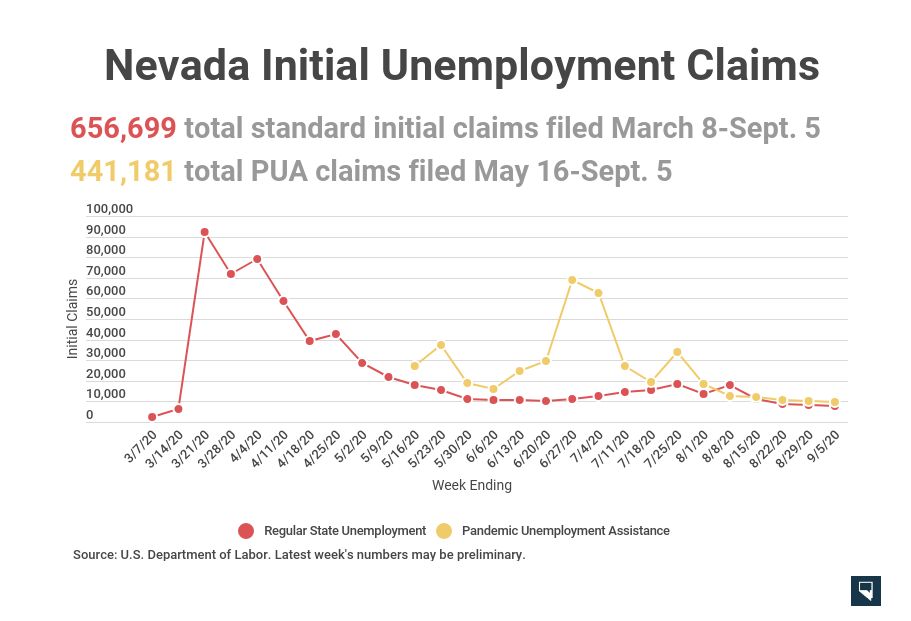
Continued claims — the ones filed each week a person is unemployed and after the “initial claim” — kept decreasing in the two main programs and slowly increasing in the two programs designed for long-term unemployment.
Across the four programs, there were 344,669 continued claims last week. That’s a drop of 8,171 from a week earlier.
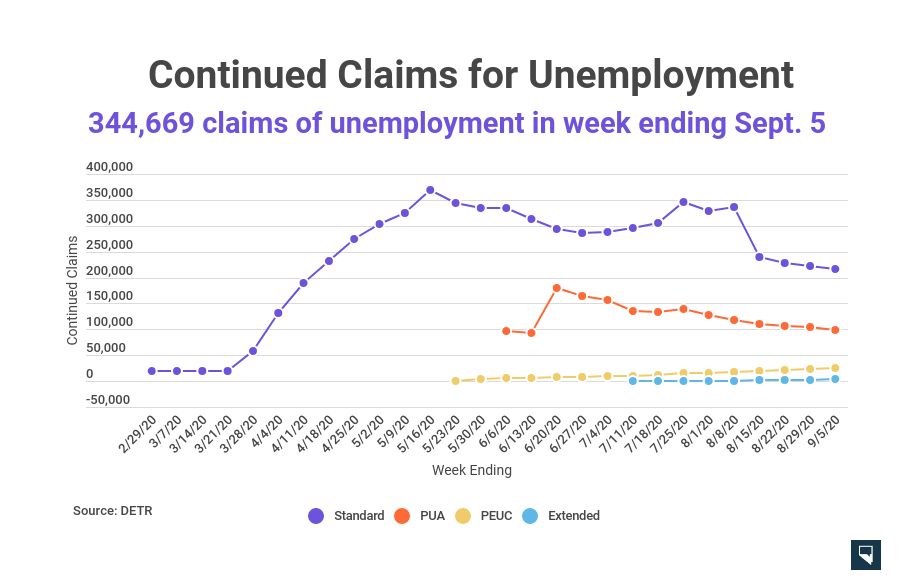
Insured unemployment, which indicates how many people eligible for regular unemployment who are actually claiming it, declined again last week to 15.6 percent. That is a drop of 0.4 percentage points and brings Nevada to its lowest rate since mid-April.
Nationally, the most recent insured unemployment rate was 9 percent, unchanged from a week earlier. Nevada’s rate is the third worst in the country in the most recent rankings.
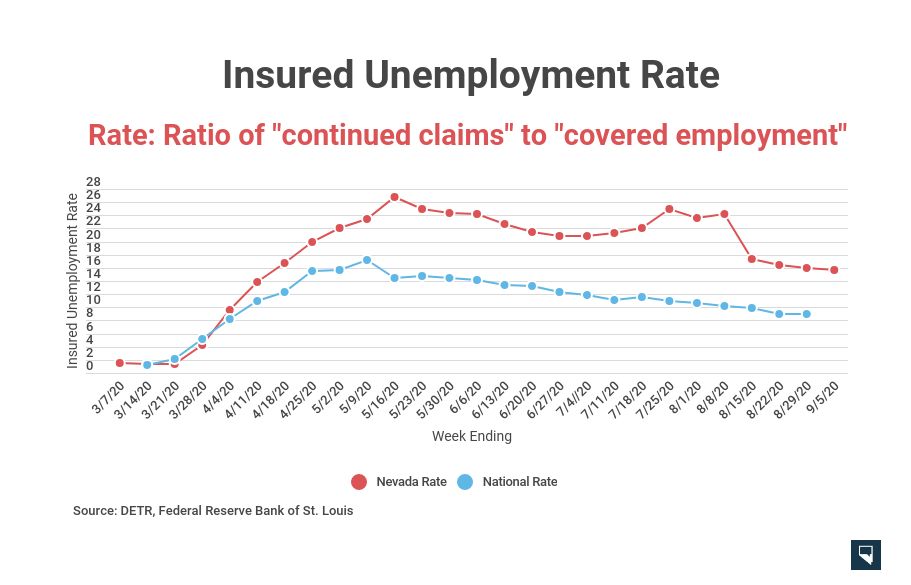
DETR paid out about $97 million in benefits across all programs last week, including ones supported by federal funds. That’s slightly higher than the payout from a week earlier.
The state’s trust fund stands at $167 million, which is enough to pay benefits for less than three weeks at the current rate. Nevada expects to borrow from the federal government if the fund runs dry.
Susan Brown, the head of the Governor’s Finance Office, told lawmakers on Friday that if the state still has leftover coronavirus relief funds at the end of the year, it plans to put them into the trust fund. That aid is “use it or lose it,” but the state expects to use most of it by the deadline.
